#Employee Performance Monitoring
Explore tagged Tumblr posts
Text
The Evolution of Employee Monitoring: What to Expect in 2025
As workplaces continue to evolve, so do the tools and strategies businesses use to ensure productivity and security. Employee monitoring has dramatically changed over time, transforming from very primitive systems to advanced ones based on technology. So, what would be the case in 2025? Let’s look into the trends, innovation, and challenges molding employee monitoring in the future.
What has brought about a change in employee monitoring?
The journey of employee monitoring has always been coupled with the advances of technology and changing dynamics at work. Business activities were based on manual monitoring like punch cards and supervision by a supervisor. Advances in the internet and digital tools created more developed forms of monitoring such as keystroke tracking and email monitoring.
The rise of remote work and hybrid models has further pushed the demand for innovative monitoring solutions in recent years. Businesses have to ensure that their employees are productive, secure, and aligned with organizational goals, irrespective of location. This has led to the integration of AI-driven tools and behavior analytics into monitoring systems, ensuring not just oversight but also actionable insights.
How do modern monitoring tools change the game?
Today’s monitoring systems are nothing like those used in the past. The following are some of the defining features of modern tools:
Real-time Insights: Tools now give real-time updates on the activities of employees, enabling businesses to make data-driven decisions.
Behavior Analytics: The system does not only track time but also analyses work patterns to show trends in productivity and areas of improvement.
Privacy-conscious Design: With growing concerns about employee privacy, monitoring tools are increasingly designed to respect boundaries while still delivering results.
Integration with Workflows: Modern systems seamlessly integrate with project management and collaboration tools, ensuring monitoring enhances productivity without becoming intrusive.
What role will AI play in 2025?
Artificial intelligence is set to play a transformative role in employee monitoring by:
AI will predict historical patterns for employee performance in order to help management take proactive steps.
Enhancing security: AI can help prevent data breaches by tracking unusual behavior patterns and ensuring compliance.
Tailoring insights: AI will give recommendations to each employee to optimize their work habits better.
Eliminating bias: Automated analysis will help in the evaluation process, especially reducing subjective evaluation; therefore, ensuring more fair evaluations.
How can businesses monitor ethically?
As monitoring tools become more powerful, business concerns are ethical in nature. Balancing oversight with employee autonomy is key. Key strategies include:
Transparency in policies: Explain what is being monitored and why.
Employee consent: Involve employees in the discussions on monitoring tools to build trust.
Focus on outcomes: Use monitoring to improve productivity and security, not to micromanage.
Regular reviews: Continuously evaluate the effectiveness and fairness of monitoring practices.
How should businesses prepare for the future?
To remain competitive, businesses must:
Invest in Training: Prepare managers and employees to effectively use and understand monitoring tools.
Adopt Scalable Solutions: Choose systems that can scale to changing business needs.
Prioritize Security: Make sure there are strong cybersecurity measures to protect sensitive employee data.
Create a Positive Culture: Make monitoring something employees see as a tool for growth, not control.
What will employee monitoring look like in the future?
Employee monitoring is likely to be more personalized, predictive, and part of daily workflows in 2025. As AI technology advances, organizations can expect more than just tracking activity; they will see improvements in employee well-being and organizational efficiency. The bottom line is how these technologies will be implemented responsibly, benefiting employers and employees alike.
It is only through embracing the human-centric approach in the evolution of monitoring systems that businesses can successfully navigate the complexities of the modern workplace to achieve sustainable success.
Handdy, an employer monitoring solutions pioneer, exemplifies these advancements by intuitive, yet privacy-friendly, tools. Real-time insights, from behavior analytics up to security and productivity-centric measures, businesses will remain at their most effective and safe. Learn more on how Handdy can unlock the full potential of your workplace.
#employee monitoring#employee activity tracking#employee performance monitoring#employee time monitoring#employee productivity monitoring
0 notes
Text
#Employee Performance Monitoring#employee productivity software#employee productivity tracking software
0 notes
Text
10 Proven Ways to Improve Work Performance and Boost Productivity

Do you ever feel like there aren't enough hours in the day to get everything done at work? You're not alone. In today's work environment, feeling overwhelmed and unproductive can be a common struggle. But what if there were ways to squeeze more out of your workday, not by working longer hours, but by working smarter?
Here, we'll unveil ten proven strategies that help you achieve peak productivity and transform yourself into ways to improve work performance. From taming distractions to optimizing your workspace, these tips will provide the tools and techniques to conquer your to-do list, impress your colleagues, and maybe even leave the office a little earlier. So, ditch the stress and read on to unlock the secrets to workday dominance!
Top 10 Ways To Improving Employee Performance
1. Set Clear Goals and Expectations
One of the primary ways to enhance work performance is by setting clear, achievable goals. When employees understand what is expected of them, they are more likely to stay focused and motivated. Establish Specific, Measurable, Achievable, Relevant, and Time-bound (SMART) goals to provide a clear roadmap for success.
2. Provide Regular Feedback
Regular feedback is essential for improving employee performance. Formative feedback allows employees to comprehend their strengths and areas for advancement. Schedule frequent one-on-one meetings to discuss performance, address concerns, and provide guidance. This continuous loop of communication ensures that employees stay aligned with company objectives.
3. Invest in Employee Training and Development
Constant learning is essential in today's fast-paced position environment. Offer training programs, workshops, and conferences to improve employees' talents and abilities. This investment improves work performance but also boosts employee morale and retention.

4. Utilize Workforce Management Software
Workforce management software can significantly enhance productivity by streamlining various HR functions. These tools help with scheduling, attendance tracking, and performance monitoring, ensuring that employees effectively manage and resources optimally utilized. Implementing such software can lead to more efficient workflows and better performance outcomes.
5. Encourage Work-Life Balance
A healthy work-life balance is crucial for maintaining high-performance levels. Encourage employees to take regular breaks, use their vacation days, and avoid overworking. A well-rested employee is more productive, creative, and less prone to burnout. Flexible working hours and remote work opportunities can also contribute to a better work-life balance.
6. Foster a Positive Work Environment
Creating a positive work environment can significantly impact employee performance. Foster a culture of respect, collaboration, and recognition. Celebrate achievements, provide opportunities for team-building activities, and maintain open lines of communication. A supportive work environment can boost morale and enhance overall productivity.
7. Implement Employee Performance Monitoring
Effective employee performance monitoring is essential for identifying areas where improvements are needed. Use performance appraisal systems and key performance indicators (KPIs) to track progress and measure success.

8. Promote Efficient Time Management
Time management is a critical skill for improving work performance. Encourage employees to prioritize tasks, set deadlines, and avoid multitasking. Tools like to-do lists, calendars, and project management software can aid in organizing tasks and managing time more effectively. Training sessions on time management techniques can also be beneficial.
9. Leverage Technology and Automation
Technology can significantly enhance productivity by automating repetitive tasks and streamlining processes. Invest in software and tools can automate administrative tasks, data entry, and communication. It allows employees to focus on more strategic and creative aspects of their work, leading to improved performance.
10. Encourage Continuous Improvement
Cultivate a culture of continuous improvement where employees are encouraged to seek new ways to enhance their performance. Encourage innovation, creativity, and a willingness to adapt to new methods and technologies. Provide platforms for employees to share their ideas and suggestions for process improvements.
You Can Also Watch:
youtube
Conclusion
Improving employee performance and boosting productivity requires a multifaceted approach that includes setting clear goals, providing regular feedback, investing in training, and utilizing advanced tools like workforce management software. By fostering a positive work environment and encouraging continuous improvement, organizations can ensure that their employees perform at their best, contributing to overall business success.
Implementing these ten ways to improve work performance strategies to see a noticeable improvement in work performance and productivity within your organization. Embrace the changes and continuously strive for excellence to stay ahead in the competitive business landscape.
#ways to improve work performance#improving employee performance#ways an#employee can improve performance#employee performance monitoring#workforce management software#Youtube
0 notes
Text
Nurturing Your Team: Tips for Developing an Employee Wellbeing Strategy

In today's fast-paced and demanding work environments, employee wellbeing has become a critical factor in maintaining a healthy and productive workforce. A well-thought-out employee wellbeing strategy can help organizations foster a culture of health, happiness, and productivity among their employees. In this article, we will discuss some tips for developing an effective employee engagement wellbeing strategy that can help enhance employee engagement, performance, and overall satisfaction.
Understanding Employee Wellbeing
The physical, mental, and emotional well-being of workers is included in the concept of employee wellness. It includes factors such as work-life balance, job satisfaction, stress management, and physical health. To develop an effective employee wellbeing and performance strategy, it is essential to understand the unique needs and challenges faced by your workforce.
Employee Engagement and Wellbeing
Employee engagement plays a crucial role in employee wellbeing. Engaged employees are more likely to feel satisfied with their jobs, have higher levels of morale, and perform better at work. To enhance employee engagement and wellbeing, organizations can consider implementing initiatives such as regular feedback sessions, recognition programs, and opportunities for career development.
Employee Wellbeing and Performance
There is a strong correlation between employee wellbeing and performance. Employees who feel supported and valued by their organizations are more likely to be motivated to perform at their best. By prioritizing employee wellbeing, organizations can create a positive work environment that fosters high performance and productivity.
Employee Wellbeing Initiatives

Developing employee wellbeing time tracking requires a holistic approach that addresses various aspects of employee wellbeing. Some common employee wellbeing initiatives include:
Flexible work arrangements: Offering flexible work hours or remote work options can help employees better manage their work-life balance and reduce stress.
Wellness programs: Implementing wellness programs such as fitness challenges, mindfulness sessions, or nutrition workshops can promote physical and mental health among employees.
Employee assistance programs (EAPs): EAPs provide employees with access to confidential counseling and support services to help them cope with personal or work-related issues.
Creating a Supportive Work Environment
Creating a supportive work environment is key to promoting employee wellbeing. This includes fostering open communication, providing opportunities for professional growth and development, and promoting a culture of respect and inclusivity. By creating a supportive work environment, organizations can help employees feel valued, respected, and motivated to perform at their best.
Encouraging Work-Life Balance
Work-life balance is essential for maintaining employee wellbeing. Encouraging employees to prioritize their personal lives outside of work can help prevent burnout and improve overall job satisfaction. Organizations can support work-life balance by offering flexible work arrangements, promoting time-off policies, and encouraging employees to disconnect from work during non-working hours.
Providing Mental Health Support
Mental health is a critical component of employee wellbeing. Organizations can provide mental health support by offering access to counseling services, promoting mental health awareness, and creating a supportive environment where employees feel comfortable discussing mental health issues. By prioritizing mental health support, organizations can help reduce stigma and improve overall employee wellbeing.
Offering Financial Wellness Programs
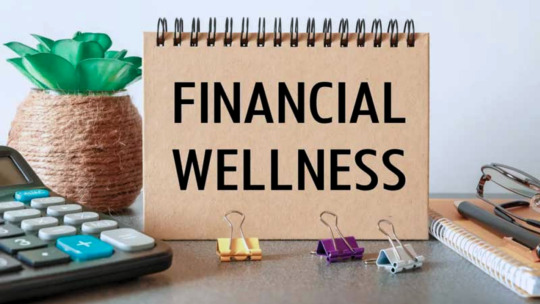
Financial stress can significantly impact employee wellbeing. Offering financial wellness programs, such as financial planning workshops or access to financial advisors, can help employees better manage their finances and reduce stress. By addressing financial wellness, organizations can improve overall employee wellbeing and job satisfaction.
Regularly Evaluating and Adjusting the Strategy
Developing an employee wellbeing & performance strategy is not a one-time process with flexible holiday policy. It is essential to regularly evaluate the effectiveness of the strategy and make adjustments as needed. This can involve collecting feedback from employees, monitoring key performance indicators related to wellbeing, and staying informed about best practices in employee wellbeing. By regularly evaluating and adjusting the strategy, organizations can ensure that it remains relevant and effective in promoting employee wellbeing.
Employee Performance Monitoring
Employee performance monitoring is an essential aspect of any employee wellbeing initiatives strategy. By regularly monitoring employee performance, organizations can identify potential issues early on and take proactive measures to address them. Performance monitoring software can help organizations track employee performance metrics and provide insights into areas where improvement may be needed.
Conclusion
Developing an employee wellbeing strategy is essential for organizations looking to create a positive work environment that supports the health, happiness, and productivity of their employees. By understanding the importance of employee wellbeing, implementing relevant initiatives, and regularly monitoring employee performance, organizations can nurture their teams and create a culture of wellbeing that benefits both employees and the organization as a whole.
#employee wellbeing strategy#employee engagement and wellbeing#employee wellbeing and performance#employee wellbeing initiatives#employee performance monitoring
0 notes
Text
Nurturing Your Team: Tips for Developing an Employee Wellbeing Strategy

In today's fast-paced and demanding work environments, employee wellbeing has become a critical factor in maintaining a healthy and productive workforce. A well-thought-out employee wellbeing strategy can help organizations foster a culture of health, happiness, and productivity among their employees. In this article, we will discuss some tips for developing an effective employee engagement wellbeing strategy that can help enhance employee engagement, performance, and overall satisfaction.
Understanding Employee Wellbeing
The physical, mental, and emotional well-being of workers is included in the concept of employee wellness. It includes factors such as work-life balance, job satisfaction, stress management, and physical health. To develop an effective employee wellbeing and performance strategy, it is essential to understand the unique needs and challenges faced by your workforce.
Employee Engagement and Wellbeing
Employee engagement plays a crucial role in employee wellbeing. Engaged employees are more likely to feel satisfied with their jobs, have higher levels of morale, and perform better at work. To enhance employee engagement and wellbeing, organizations can consider implementing initiatives such as regular feedback sessions, recognition programs, and opportunities for career development.
Employee Wellbeing and Performance
There is a strong correlation between employee wellbeing and performance. Employees who feel supported and valued by their organizations are more likely to be motivated to perform at their best. By prioritizing employee wellbeing, organizations can create a positive work environment that fosters high performance and productivity.
Employee Wellbeing Initiatives

Developing employee wellbeing time tracking requires a holistic approach that addresses various aspects of employee wellbeing. Some common employee wellbeing initiatives include:
Flexible work arrangements: Offering flexible work hours or remote work options can help employees better manage their work-life balance and reduce stress.
Wellness programs: Implementing wellness programs such as fitness challenges, mindfulness sessions, or nutrition workshops can promote physical and mental health among employees.
Employee assistance programs (EAPs): EAPs provide employees with access to confidential counseling and support services to help them cope with personal or work-related issues.
Creating a Supportive Work Environment
Creating a supportive work environment is key to promoting employee wellbeing. This includes fostering open communication, providing opportunities for professional growth and development, and promoting a culture of respect and inclusivity. By creating a supportive work environment, organizations can help employees feel valued, respected, and motivated to perform at their best.
Encouraging Work-Life Balance
Work-life balance is essential for maintaining employee wellbeing. Encouraging employees to prioritize their personal lives outside of work can help prevent burnout and improve overall job satisfaction. Organizations can support work-life balance by offering flexible work arrangements, promoting time-off policies, and encouraging employees to disconnect from work during non-working hours.
Providing Mental Health Support
Mental health is a critical component of employee wellbeing. Organizations can provide mental health support by offering access to counseling services, promoting mental health awareness, and creating a supportive environment where employees feel comfortable discussing mental health issues. By prioritizing mental health support, organizations can help reduce stigma and improve overall employee wellbeing.
Offering Financial Wellness Programs

Financial stress can significantly impact employee wellbeing. Offering financial wellness programs, such as financial planning workshops or access to financial advisors, can help employees better manage their finances and reduce stress. By addressing financial wellness, organizations can improve overall employee wellbeing and job satisfaction.
Regularly Evaluating and Adjusting the Strategy
Developing an employee wellbeing & performance strategy is not a one-time process with flexible holiday policy. It is essential to regularly evaluate the effectiveness of the strategy and make adjustments as needed. This can involve collecting feedback from employees, monitoring key performance indicators related to wellbeing, and staying informed about best practices in employee wellbeing. By regularly evaluating and adjusting the strategy, organizations can ensure that it remains relevant and effective in promoting employee wellbeing.
Employee Performance Monitoring
Employee performance monitoring is an essential aspect of any employee wellbeing initiatives strategy. By regularly monitoring employee performance, organizations can identify potential issues early on and take proactive measures to address them. Performance monitoring software can help organizations track employee performance metrics and provide insights into areas where improvement may be needed.
Conclusion
Developing an employee wellbeing strategy is essential for organizations looking to create a positive work environment that supports the health, happiness, and productivity of their employees. By understanding the importance of employee wellbeing, implementing relevant initiatives, and regularly monitoring employee performance, organizations can nurture their teams and create a culture of wellbeing that benefits both employees and the organization as a whole.
#employee wellbeing strategy#employee engagement and wellbeing#employee wellbeing and performance#employee wellbeing initiatives#employee performance monitoring
0 notes
Text
Unlocking The Team's Potential With The Art Of Effective Performance Monitoring
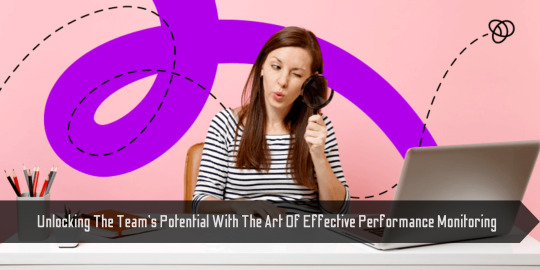
In the dynamic landscape of the present work environment, streamlining group execution isn't simply an objective; it's a need. As associations make progress toward greatness, the job of successful execution observing couldn't possibly be more significant. The craft of execution checking goes past simple assessment; an essential instrument opens the genuine capability of a group, cultivating development and achievement.
Performance monitoring involves tracking and evaluating the efficiency and effectiveness of systems, applications, or processes to ensure optimal functionality. It includes real-time analysis, measurement of key performance indicators, and proactive identification of issues to maintain and enhance overall performance.
In this article, we explore the key components of effective performance monitoring and how it is harnessed to propel teams to new heights.
Setting Clear Expectations
At the center of performance monitoring is the establishment of clear assumptions. Colleagues need to have an exhaustive comprehension of their jobs, obligations, and the particular objectives they hope to achieve. Clear correspondence of hypotheses makes a guide for progress, adjusting individual endeavors to hierarchical goals. This straightforwardness decreases diversion as well as enables colleagues to take responsibility for work, driving a feeling of responsibility.
Real-Time Feedback for Continuous Improvement
The traditional yearly performance survey is step-by-step clearing a path for real time feedback mechanisms. Holding up a year to resolve issues or perceive accomplishments unsafe to group elements and individual development. Ongoing input takes into consideration ceaseless improvement, empowering groups to adjust quickly to evolving conditions. Chiefs and colleagues can take part in useful discussions, tending to difficulties immediately and commending victories right now. It cultivates a culture of spryness and responsiveness, basic in the present speedy business environment.
Data-Driven Insights
Performance monitoring, when combined with data-driven experiences, turns into an incredible asset for direction. Utilizing examination and measurements gives a thorough perspective on group execution, recognizing patterns, qualities, and regions for development. These experiences empower pioneers to settle on informed choices, distribute assets productively, and execute designated mediations where essential.
The reconciliation of innovation in execution observing works with the assortment and examination of information, changing it into significant knowledge for upgrading group adequacy.

Goal Alignment and Progress Tracking
Adjusting individual and group objectives to overall hierarchical goals is a basic part of compelling execution observing. At the point when colleagues comprehend how their commitments add to the bigger mission, motivation, and commitment fly. Expected advancement following against the fourth objective helps measure accomplishments and gives an open door to recalibrate systems if necessary.
Its iterative cycle guarantees that the group remains on track, adjusting to difficulties while keeping a reasonable direction towards success.
Cultivating a Culture of Continuous Learning
Performance monitoring, when joined with data-driven encounters, transforms into a staggering resource for bearing. Using assessment and estimations gives an intensive point of view on bunch execution, perceiving examples, characteristics, and locales for improvement. These encounters engage trailblazers to make informed decisions, circulate resources gainfully, and execute assigned interventions where required.
The reconciliation of development in execution observing works with the arrangement and assessment of data, transforming it into huge information for redesigning group adequacy.
Recognition and Motivation
Realizing and celebrating achievements is a foundation of powerful performance monitoring. Acknowledgment fills in as a powerful inspiration, boosting everyone's spirits and supporting positive ways of behaving. Whether through open affirmation, rewards, or vocation improvement potential open doors, perceiving individual and group achievements creates a feeling of satisfaction and fulfillment. This uplifting feedback adds to a propelled labor force that puts resources into the outcome of the group and the association overall.
You can also watch:
youtube
Conclusion
Unlocking the team's potential through effective performance monitoring is an art that requires a holistic approach. Exact assumptions, real-time feedback, information-driven experiences, objective arrangement, ceaseless learning, and acknowledgment structure the material on which this workmanship painted. In this reality where flexibility and spryness are central, associations that become amazing at execution checking are better situated to explore difficulties, benefit from potential open doors, and push their groups to remarkable degrees of accomplishment. As we embrace the fate of work, let effective execution checking be the directing power that changes groups into high-performing units, prepared to overpower the difficulties of today and tomorrow.
#performance monitoring#monitoring performance#application performance monitoring#employee performance monitoring#Youtube
0 notes
Text

There are many ways to monitor employee performance. In this infographic, you will get to know how to do employee performance monitoring.
0 notes
Text
youtube
In this video, we explore the emerging trends, technologies, and innovations shaping the future of employee monitoring software, with insights from industry experts and a closer look at how wAnywhere is leading the way.
#future of employee monitoring software#wAnywhere#AI#Software#Monitoring Tool#Technology#AI Software#AI Tool#Employee Monitoring#Track Employee Performance#HR Software#Tech Software#Youtube
1 note
·
View note
Text

Creating a Culture of Compliance with Checklists
"Compliance is not a task; it’s a mindset." – Business Adage
Building a culture of compliance isn’t about policing employees—it’s about integrating accountability into daily operations. Companies that rely on manual tracking and sporadic audits often find themselves struggling with inconsistent adherence to procedures, regulatory risks, and operational inefficiencies. The solution? Checklists.
Why Organizations Struggle with Compliance
1. Compliance Feels Like an Extra Burden
When employees perceive compliance as a tedious, bureaucratic requirement, they often cut corners or overlook critical steps.
Case Study: The Logistics Firm That Reduced Errors A leading Asian logistics company suffered frequent shipment errors due to skipped documentation steps. After introducing automated checklists, accuracy improved by 42%, and shipment delays dropped significantly.
2. Lack of Clear Accountability
Without structured tracking, it’s easy for employees to assume someone else is responsible for compliance tasks.
Example: The Hospital That Improved Patient Safety A major Singaporean hospital faced patient safety risks due to incomplete hygiene protocols. Implementing a real-time digital checklist system increased adherence to safety procedures by 95%, significantly lowering infection rates.
3. Inconsistent Monitoring & Reinforcement
If compliance is only reviewed during audits or when problems arise, it creates a reactive culture rather than a proactive one.
Anecdote: The Factory That Avoided Costly Shutdowns A Malaysian manufacturing plant faced frequent production halts due to missed machine maintenance. A structured checklist system flagged overdue tasks, reducing downtime by 30% and improving efficiency.
How Checklists Drive a Compliance-First Culture
1. Standardize Expectations
Checklists ensure that every employee follows the same process, every time.
They eliminate ambiguity and improve consistency.
2. Make Compliance Part of Daily Work
Integrate checklists directly into workflows rather than treating them as separate admin tasks.
Mobile and automated checklists reduce friction and increase adoption.
3. Provide Real-Time Visibility & Accountability
Digital checklists allow managers to track compliance progress in real-time.
Automatic notifications ensure no critical steps are skipped.
4. Reinforce with Recognition & Training
Highlight teams that demonstrate compliance excellence.
Use checklist data to identify areas for improvement and provide targeted coaching.
Conclusion: Compliance is a Habit, Not an Obligation
"A culture of compliance starts when employees see it as part of their success, not just a rule to follow."
By integrating checklists into daily operations, organizations can create a compliance-driven culture that is efficient, transparent, and proactive. Rather than waiting for audits or crises, companies that use structured checklists embed accountability into their DNA, ensuring long-term success. Is your organization ready to embrace compliance as a competitive advantage? To know more about Checklist and its Benefits, Visit : Starr.tectalik.com
#performancemanagement#employees#customer#working#business#services#branding#domainforsale#management#companies#hiring#performance#employee monitoring software#business management
0 notes
Text
Need a way to monitor your team? Our list of top employee monitoring software for small businesses can help you stay on top of productivity.
#employee monitoring software#small business tools#productivity software#workforce management software#business software#performance tracking#employee productivity#business efficiency#best software#top software
0 notes
Text
Key Steps in the Performance Appraisal Process
This infographic is a crucial resource for businesses and HR professionals seeking to enhance their performance appraisal process.

#performance appraisal process#performance appraisal#employee monitoring#performance appraisal system#360 degree performance appraisal
0 notes
Text
10 Powerful Productivity Hacks to Boost Employee Performance
Productivity is the backbone of any successful organization. High-performing employees don’t just get more done, they drive business outcomes, improve workplace morale, and contribute to a thriving company culture. As a manager, enhancing your team’s productivity isn’t just an aspiration; it’s a necessity in today’s competitive environment.
This blog explores what employee productivity means, why it matters, how to track it effectively, and, most importantly, 10 actionable productivity hacks to help managers elevate team efficiency.
What is Productivity?
In a business context, employee productivity refers to the efficiency with which tasks and goals are completed. For employees, it means achieving maximum output with minimal wasted effort or time. A productive employee doesn’t just check tasks off a list — they complete meaningful work that aligns with organizational objectives.
Productivity isn’t static; it fluctuates based on motivation, workplace environment, tools, and leadership. Understanding what drives productivity in your team is key to sustaining high performance.
How To Track Employee Productivity?
Employee productivity tracking is a critical component of effective management. Without it, you’re operating blind, unsure of where your team excels and where improvements are needed. Here are a few practical steps to monitor productivity:
Set Clear KPIs: Define measurable objectives for employees, such as sales targets, project deadlines, or quality standards.
Use Time-Tracking Tools: Platforms like Asana, Clockify, or Trello help visualize where employees are spending their time.
Monitor Work Output: Compare output against the time and resources allocated to a task.
Conduct Regular Performance Reviews: Evaluate employee performance tracking metrics during one-on-one meetings.
Tracking productivity isn’t about micromanagement. It’s about gathering insights to provide better support and resources for your team.
The Importance of Employee Productivity
Why is productivity so critical in the workplace? The importance of employee productivity extends far beyond individual performance:
Higher ROI: Productive employees maximize the value derived from organizational resources.
Competitive Advantage: A high-performing team meets deadlines faster and delivers better quality, outpacing competitors.
Employee Satisfaction: Achieving goals boosts morale and motivates teams to aim higher.
Better Resource Allocation: Understanding productivity gaps allows managers to deploy resources where they’re needed most.
In short, when employees thrive, businesses thrive.
See Also
Six Strategies To Improve Teamwork & Collaboration At Your Workplace
10 Productivity Hacks Managers Need to Boost Team Efficiency
Here are 10 powerful strategies to unlock your team’s full potential:
Set SMART Goals: Encourage employees to set Specific, Measurable, Achievable, Relevant, and Time-bound (SMART) goals. This creates clarity and helps team members focus on priorities.
Leverage Technology: Invest in tools that streamline workflows and reduce manual effort. Productivity apps, project management software, and automation tools can transform how tasks are managed.
Encourage Breaks: Counterintuitive as it may seem, regular breaks enhance focus. The Pomodoro Technique, which alternates 25 minutes of work with 5-minute breaks, is particularly effective.
Promote a Growth Mindset: Foster a culture of continuous learning. Encourage employees to take ownership of their growth, experiment with new ideas, and learn from mistakes.
Provide Constructive Feedback: Timely, actionable feedback is key to employee performance tracking. Highlight areas for improvement without discouraging team members.
Create a Collaborative Environment: Encourage open communication and teamwork. A collaborative atmosphere makes problem-solving more efficient and reduces bottlenecks.
Recognize Achievements: Publicly acknowledge accomplishments to boost morale. Employee recognition fosters a sense of purpose and motivates others to excel.
Ensure Work-Life Balance: Burnout is a productivity killer. Offer flexible schedules, encourage time off, and respect boundaries to help employees recharge.
Invest in Employee Development: Provide training and upskilling opportunities. Employees who feel valued are more engaged and productive.
Streamline Meetings: Limit unnecessary meetings and ensure those that occur have a clear agenda. This minimizes disruptions and ensures employees have time to focus on meaningful work.
Looking for Ways to Boost Employee Productivity at Your Organization?
Employee productivity is not a one-size-fits-all concept. Every organization — and every employee — is unique. By understanding the importance of employee productivity, implementing employee productivity tracking tools, and adopting these productivity hacks, you can build a high-performing team that consistently delivers exceptional results.
If you’re ready to transform your organization, start by analyzing your current productivity metrics. Where do you see room for improvement? Which strategies can you implement today?
Remember, productivity isn’t just about working harder — it’s about working smarter. With the right approach, your team can achieve extraordinary outcomes while maintaining balance and satisfaction in their work lives. Visit www.handdy.com for more information.
#employee monitoring#productivity tracking#productivity monitoring#employee tracking#employee performance tracking
0 notes
Text
Employee performance monitoring refers to the strategic approach of keeping tabs on how well employees work for a business to stay on top. It’s about ensuring everyone works at their best to reach the company’s goals. But, it’s a bit tricky because you have to juggle business needs with respecting employees’ privacy.
For a business to thrive, it’s important to always monitor how things are going. This means regularly checking how well different strategies are working. And for things to get better, management needs to know what’s happening right now. That’s why we pick out important indicators, called KPIs, to keep track of progress.
0 notes
Text
10 Ideas for Enhancing Your Performance Appraisal Process

In today’s fast-paced work environment, traditional performance appraisals often feel like a relic of the past—something to check off a list rather than a genuine opportunity for growth and connection. Employees want rapid, constructive, and engaging feedback, and businesses are increasingly recognizing the importance of nurturing talent to achieve success.
Consider a performance appraisal process that does more than just assess past performance; it actively promotes employee development, fires motivation, and deepens the link between managers and their teams.
In this blog, We will explore ten innovative ideas for enhancing your performance appraisal. These strategies aim to create a more meaningful dialogue, inspire professional growth, and ultimately contribute to a more engaged and productive workforce.
#1 Set Clear Expectations
Before the appraisal process begins, ensure that employees understand what is expected of them. Clear performance goals and criteria should be presented at the beginning of the review period. This transparency helps employees align their work with the company’s objectives, making the appraisal more relevant and constructive.
#2 Incorporate 360-Degree Feedback

360-degree feedback offers a more complete picture of an employee's performance. This strategy involves receiving feedback from a variety of sources, including peers, subordinates, and superiors. By collecting diverse perspectives, you can help employees gain a better understanding of their strengths and areas for improvement.
#3 Embrace Continuous Feedback
Move away from the annual review model and toward continual feedback. This approach encourages regular check-ins throughout the year, allowing managers and employees to discuss performance in real time. Frequent feedback can help address issues as they arise and foster a culture of open communication, reducing anxiety around formal appraisal meetings.
#4 Use Performance Management Software
Investing in performance management software can streamline the appraisal process. These tools often include features for setting goals, tracking progress, and facilitating feedback. With intuitive dashboards and analytics, both managers and employees can easily access performance data, making discussions more productive and focused.
#5 Focus on Employee Development
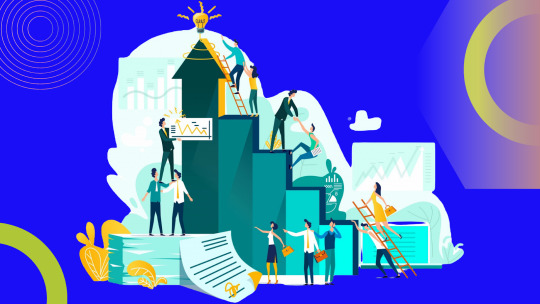
Shift the focus of appraisals from merely assessing past performance to emphasizing employee development. Appraisals can be used to identify growth areas and establish individualized development plans. Encouraging employees to pursue professional growth can boost engagement and retention rates.
#6 Make It a Two-Way Conversation
Encourage a two-way dialogue during the appraisal process. Instead of a one-sided review, create space for employees to express their thoughts, concerns, and aspirations. This collaborative approach not only builds trust but also allows managers to understand their employees' perspectives.
#7 Recognize and Reward Achievements
Incorporate recognition and rewards into your appraisal process. Recognizing an employee's accomplishments can increase morale and motivation. Consider implementing a structured reward system that aligns with performance monitoring outcomes, whether through bonuses, promotions, or public recognition.
#8 Utilize Goal-Setting Frameworks
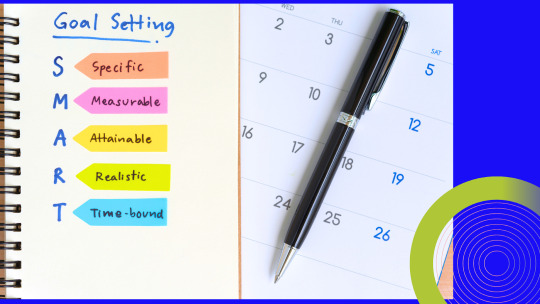
Consider implementing goal-setting frameworks such as SMART (Specific, Measurable, Achievable, Relevant, Time-bound) or OKRs (Objectives and Key Results). These frameworks can provide clarity and direction, ensuring managers and employees are aligned on performance expectations.
#9 Offer Training for Managers
Train managers on effective appraisal techniques to ensure they provide constructive and actionable feedback. Training can cover active listening, delivering difficult messages, and setting SMART goals. Empowered managers are better equipped to support their teams through the appraisal process.
#10 Solicit Employee Feedback on the Process
Lastly, gather feedback from employees about the performance review process itself. Understanding their experiences and perspectives can provide valuable insights into what works and needs improvement. Use surveys or focus groups to collect input and be open to making adjustments based on their suggestions.
Also, watch this video - EmpMonitor | Leading Employee Engagement and Workforce Productivity Tool
youtube
Conclusion
Enhancing your performance appraisal system is essential for fostering a productive and engaged workforce. By implementing these ten ideas, you can create a more effective and supportive appraisal system that benefits employees and the organization. Remember, the goal of performance appraisals should not only be to assess performance but to inspire growth, development, and a culture of continuous improvement.
#performance appraisal#employee monitoring#appraisal system#360 degree appraisal#employee appraisal#Youtube
0 notes
Text
The Power of a Holistic Employee Wellbeing Strategy
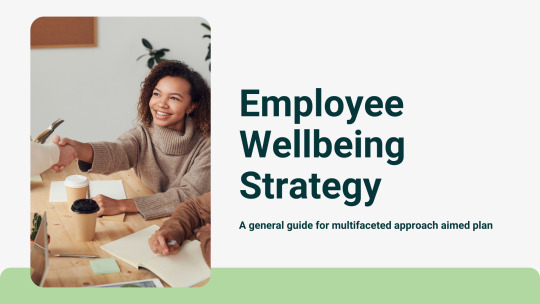
In today's competitive business landscape, companies are increasingly recognizing the pivotal role that employee wellbeing plays in achieving organizational success. Beyond mere perks and benefits, a holistic employee wellbeing strategy encompasses a multifaceted approach aimed at nurturing the physical, mental, and emotional health of employees. By prioritizing the wellbeing of their workforce, organizations can drive higher levels of employee engagement, enhance performance, and foster a thriving workplace culture.
Understanding Employee Wellbeing Strategies
Employee wellbeing strategies encompass a range of initiatives designed to support employees in various aspects of their lives. These strategies go beyond traditional healthcare benefits to address factors such as work-life balance, mental health support, professional development opportunities, and financial wellness programs. By taking a comprehensive approach, organizations can create an environment where employees feel valued, supported, and empowered to perform at their best.
The Link Between Employee Engagement and Wellbeing
Employee engagement and wellbeing are deeply interconnected. Engaged employees are those who feel a sense of connection to their work, their colleagues, and the organization as a whole. When employees are physically and mentally healthy, they are more likely to be engaged in their work, leading to higher levels of productivity, creativity, and innovation. Robust employee wellbeing strategies can therefore catalyze increased engagement, driving positive outcomes for both employees and the organization.
Enhancing Performance Through Wellbeing

Employee wellbeing directly impacts performance. When employees feel well-supported and cared for, they are better equipped to meet the demands of their roles effectively. Conversely, when wellbeing is neglected, productivity may suffer, leading to decreased performance and increased absenteeism with project management. By investing in employee wellbeing initiatives, organizations can create an environment where employees can thrive, resulting in improved performance across the board.
Implementing Employee Wellbeing Initiatives
Effective employee wellbeing initiatives require a strategic approach. Organizations can start by conducting assessments to identify areas of need and interest among their workforce. It might involve surveys, focus groups, or one-on-one discussions to gather feedback and insights. Armed with this information, organizations can then design and implement targeted initiatives that address the specific needs of their employees.
Monitoring Performance and Wellbeing
Performance monitoring software can be a valuable tool in assessing the effectiveness of employee wellbeing initiatives. By tracking key metrics such as productivity, engagement, and absenteeism, organizations can gain valuable insights into the impact of their wellbeing programs. This data can inform future decision-making and help organizations continuously refine and improve their strategies.
Creating a Culture of Wellbeing

Ultimately, the goal of employee productivity tracker wellbeing initiatives is to create a culture of wellbeing within the organization. It requires a collective effort from leadership, managers, and employees at all levels. Leaders must prioritize wellbeing and lead by example, while managers play a crucial role in supporting their teams and fostering a supportive work environment. Employees, too, have a role to play in prioritizing their wellbeing and supporting their colleagues in doing the same.
Sustaining Success Through Continuous Improvement
The journey towards holistic employee wellbeing is an ongoing process that requires continuous evaluation and improvement. Organizations must remain agile and responsive to the evolving needs of their workforce, adapting their wellbeing strategies accordingly. It might involve introducing new initiatives, refining existing programs, or leveraging technology to enhance accessibility and effectiveness. Regular feedback loops, employee surveys, and performance reviews can provide valuable insights into the effectiveness of wellbeing initiatives and identify areas for improvement.
Moreover, fostering a culture of open communication and transparency is crucial in promoting employee wellbeing. By encouraging dialogue and providing avenues for employees to voice their concerns and suggestions, organizations can demonstrate their commitment to supporting employee wellbeing and create a sense of ownership and empowerment among their workforce. By prioritizing employee wellbeing as a strategic imperative, organizations can cultivate a workplace where employees feel valued, engaged, and motivated to contribute to the organization's success.
Conclusion
Employee well-being must be prioritised in today's hectic and demanding work environment if an organisation is to succeed. A holistic employee wellbeing strategy can drive higher levels of engagement, enhance performance, and create a culture where employees feel valued and supported. By investing in employee wellbeing initiatives and leveraging performance monitoring software, organizations can create a workplace where employees can thrive, leading to positive outcomes for both individuals and the organization as a whole.
#employee engagement and wellbeing#employee wellbeing strategy#employee wellbeing initiatives#employee performance monitoring#performance monitoring software
0 notes
Text
The Power of a Holistic Employee Wellbeing Strategy

In today's competitive business landscape, companies are increasingly recognizing the pivotal role that employee wellbeing plays in achieving organizational success. Beyond mere perks and benefits, a holistic employee wellbeing strategy encompasses a multifaceted approach aimed at nurturing the physical, mental, and emotional health of employees. By prioritizing the wellbeing of their workforce, organizations can drive higher levels of employee engagement, enhance performance, and foster a thriving workplace culture.
Understanding Employee Wellbeing Strategies
Employee wellbeing strategies encompass a range of initiatives designed to support employees in various aspects of their lives. These strategies go beyond traditional healthcare benefits to address factors such as work-life balance, mental health support, professional development opportunities, and financial wellness programs. By taking a comprehensive approach, organizations can create an environment where employees feel valued, supported, and empowered to perform at their best.
The Link Between Employee Engagement and Wellbeing
Employee engagement and wellbeing are deeply interconnected. Engaged employees are those who feel a sense of connection to their work, their colleagues, and the organization as a whole. When employees are physically and mentally healthy, they are more likely to be engaged in their work, leading to higher levels of productivity, creativity, and innovation. Robust employee wellbeing strategies can therefore catalyze increased engagement, driving positive outcomes for both employees and the organization.
Enhancing Performance Through Wellbeing
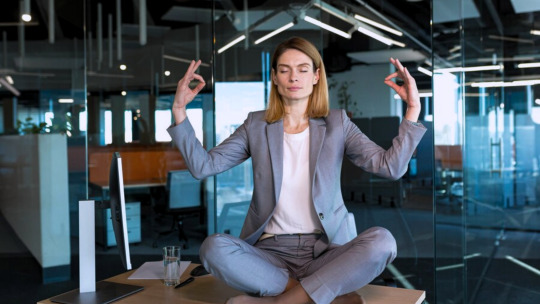
Employee wellbeing directly impacts performance. When employees feel well-supported and cared for, they are better equipped to meet the demands of their roles effectively. Conversely, when wellbeing is neglected, productivity may suffer, leading to decreased performance and increased absenteeism with project management. By investing in employee wellbeing initiatives, organizations can create an environment where employees can thrive, resulting in improved performance across the board.
Implementing Employee Wellbeing Initiatives
Effective employee wellbeing initiatives require a strategic approach. Organizations can start by conducting assessments to identify areas of need and interest among their workforce. It might involve surveys, focus groups, or one-on-one discussions to gather feedback and insights. Armed with this information, organizations can then design and implement targeted initiatives that address the specific needs of their employees.
Monitoring Performance and Wellbeing
Performance monitoring software can be a valuable tool in assessing the effectiveness of employee wellbeing initiatives. By tracking key metrics such as productivity, engagement, and absenteeism, organizations can gain valuable insights into the impact of their wellbeing programs. This data can inform future decision-making and help organizations continuously refine and improve their strategies.
Creating a Culture of Wellbeing

Ultimately, the goal of employee productivity tracker wellbeing initiatives is to create a culture of wellbeing within the organization. It requires a collective effort from leadership, managers, and employees at all levels. Leaders must prioritize wellbeing and lead by example, while managers play a crucial role in supporting their teams and fostering a supportive work environment. Employees, too, have a role to play in prioritizing their wellbeing and supporting their colleagues in doing the same.
Sustaining Success Through Continuous Improvement
The journey towards holistic employee wellbeing is an ongoing process that requires continuous evaluation and improvement. Organizations must remain agile and responsive to the evolving needs of their workforce, adapting their wellbeing strategies accordingly. It might involve introducing new initiatives, refining existing programs, or leveraging technology to enhance accessibility and effectiveness. Regular feedback loops, employee surveys, and performance reviews can provide valuable insights into the effectiveness of wellbeing initiatives and identify areas for improvement.
Moreover, fostering a culture of open communication and transparency is crucial in promoting employee wellbeing. By encouraging dialogue and providing avenues for employees to voice their concerns and suggestions, organizations can demonstrate their commitment to supporting employee wellbeing and create a sense of ownership and empowerment among their workforce. By prioritizing employee wellbeing as a strategic imperative, organizations can cultivate a workplace where employees feel valued, engaged, and motivated to contribute to the organization's success.
Conclusion
Employee well-being must be prioritised in today's hectic and demanding work environment if an organisation is to succeed. A holistic employee wellbeing strategy can drive higher levels of engagement, enhance performance, and create a culture where employees feel valued and supported. By investing in employee wellbeing initiatives and leveraging performance monitoring software, organizations can create a workplace where employees can thrive, leading to positive outcomes for both individuals and the organization as a whole.
#employee engagement and wellbeing#employee wellbeing strategy#employee wellbeing initiatives#employee performance monitoring#performance monitoring software
0 notes